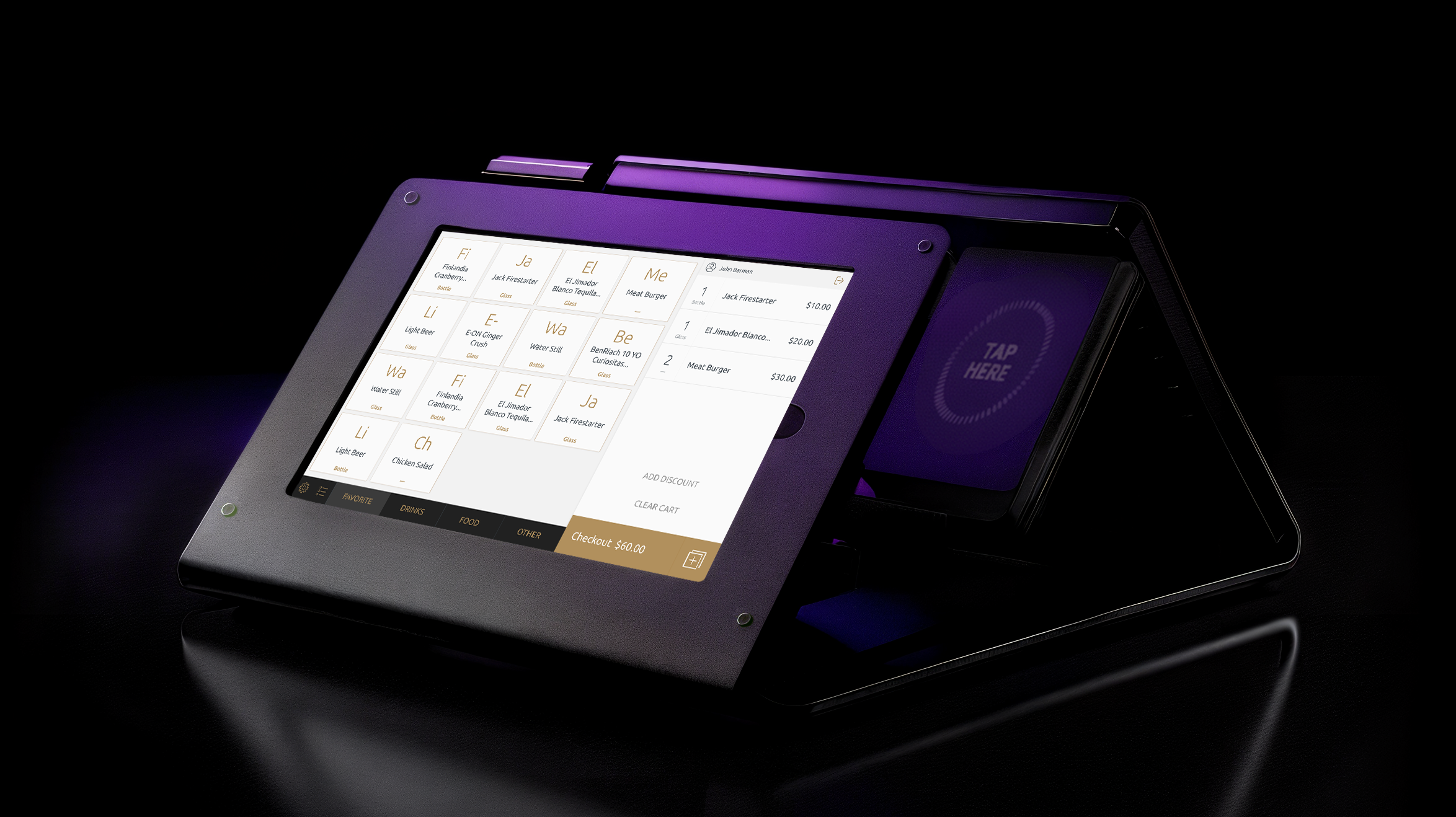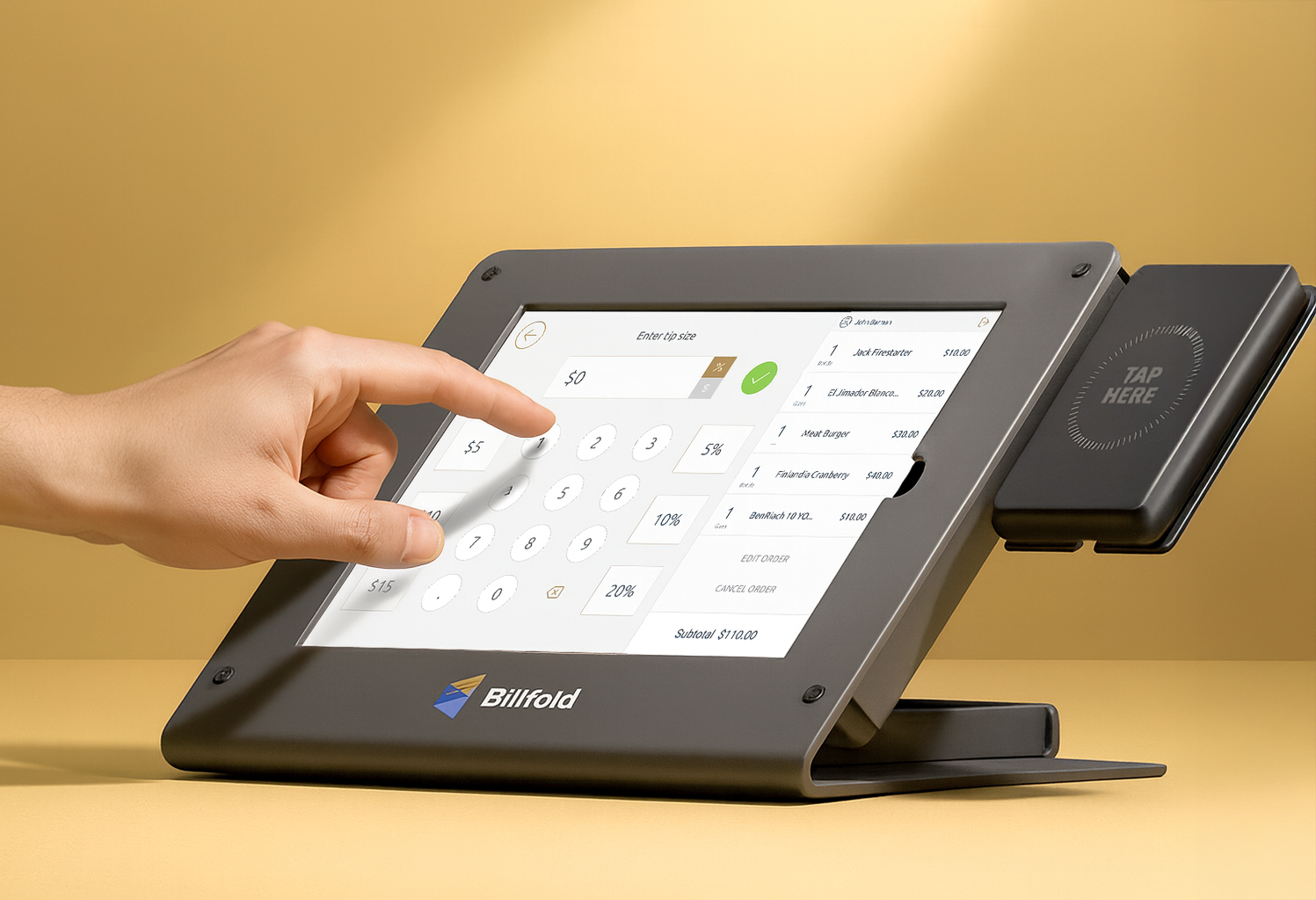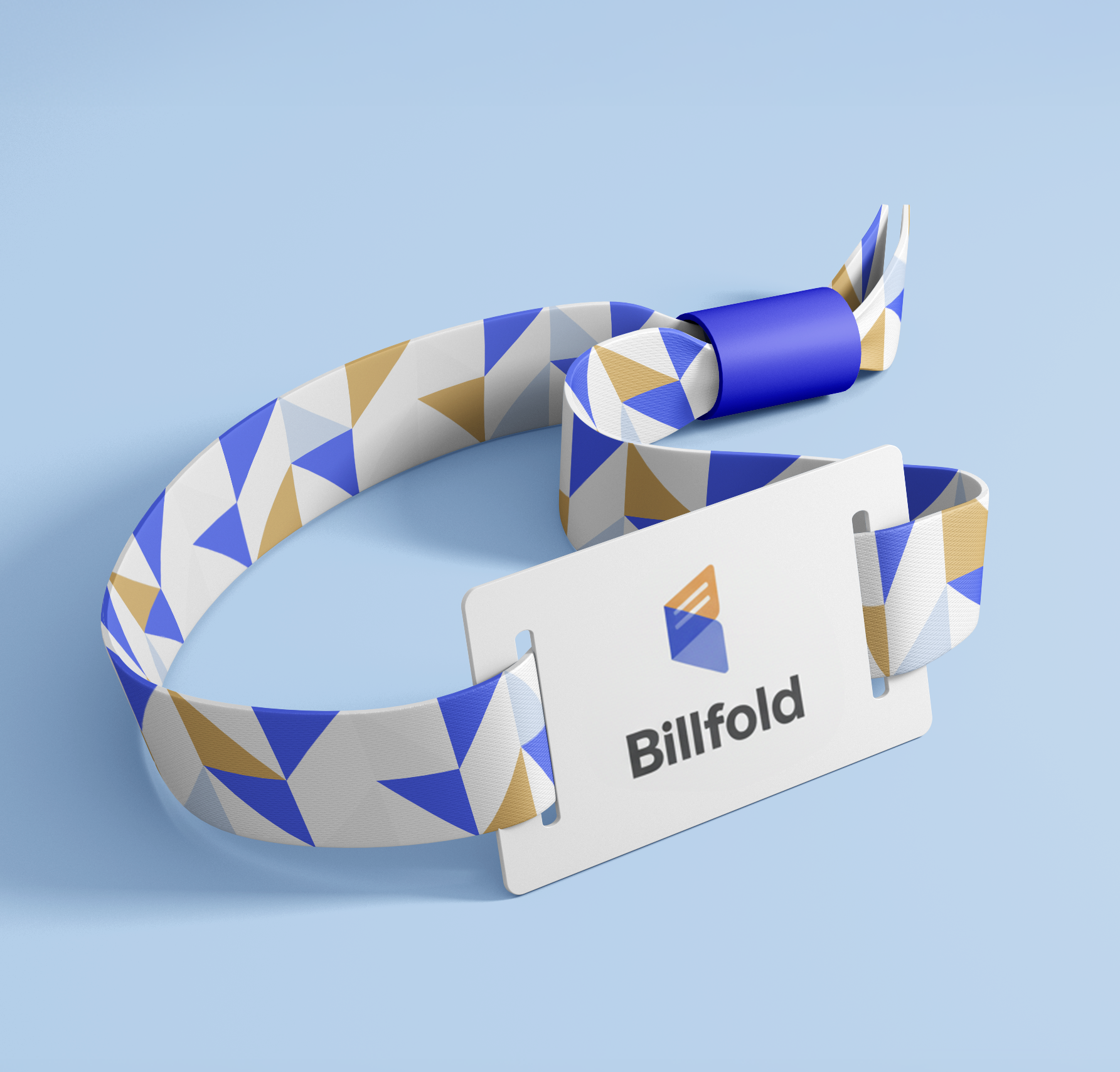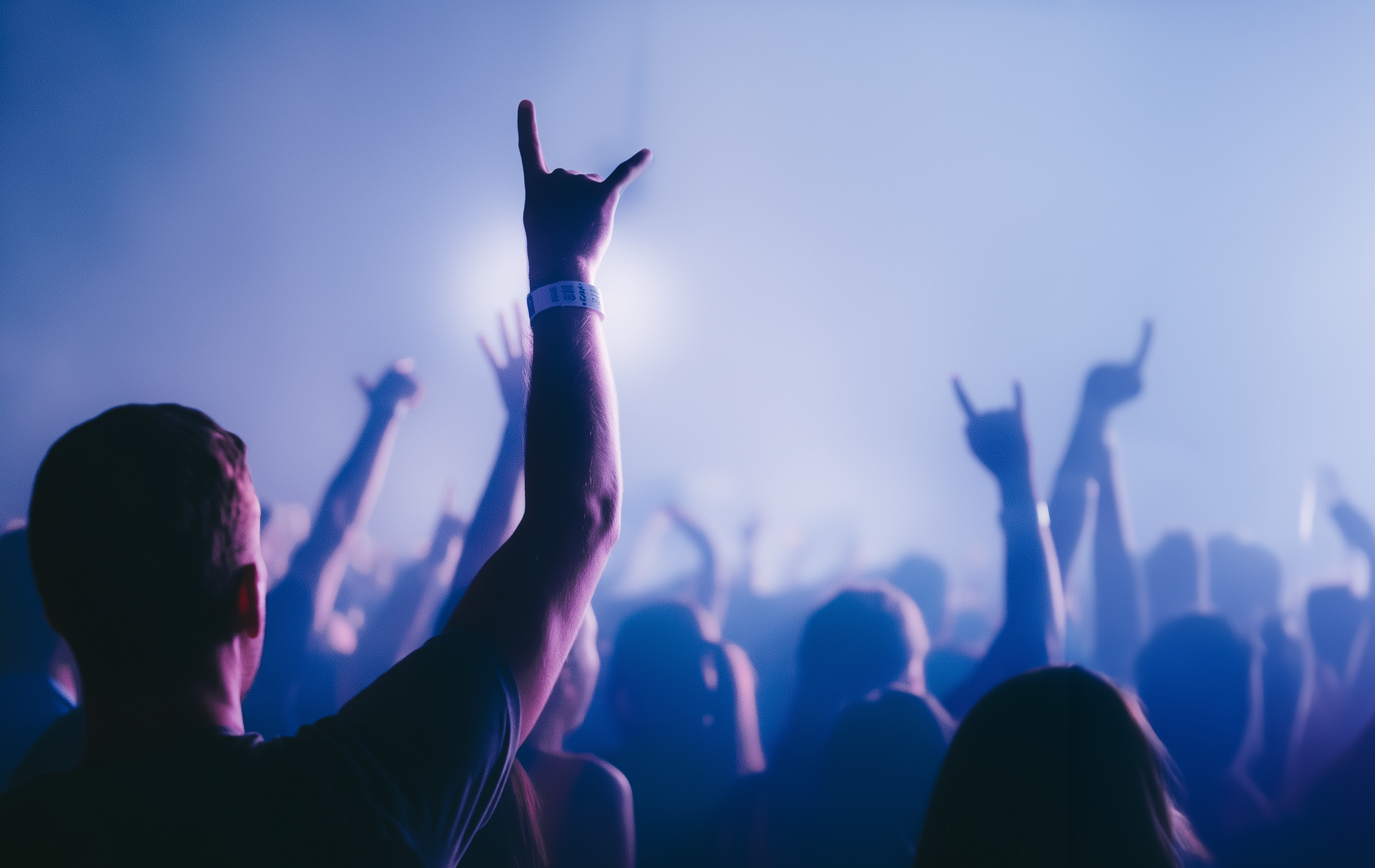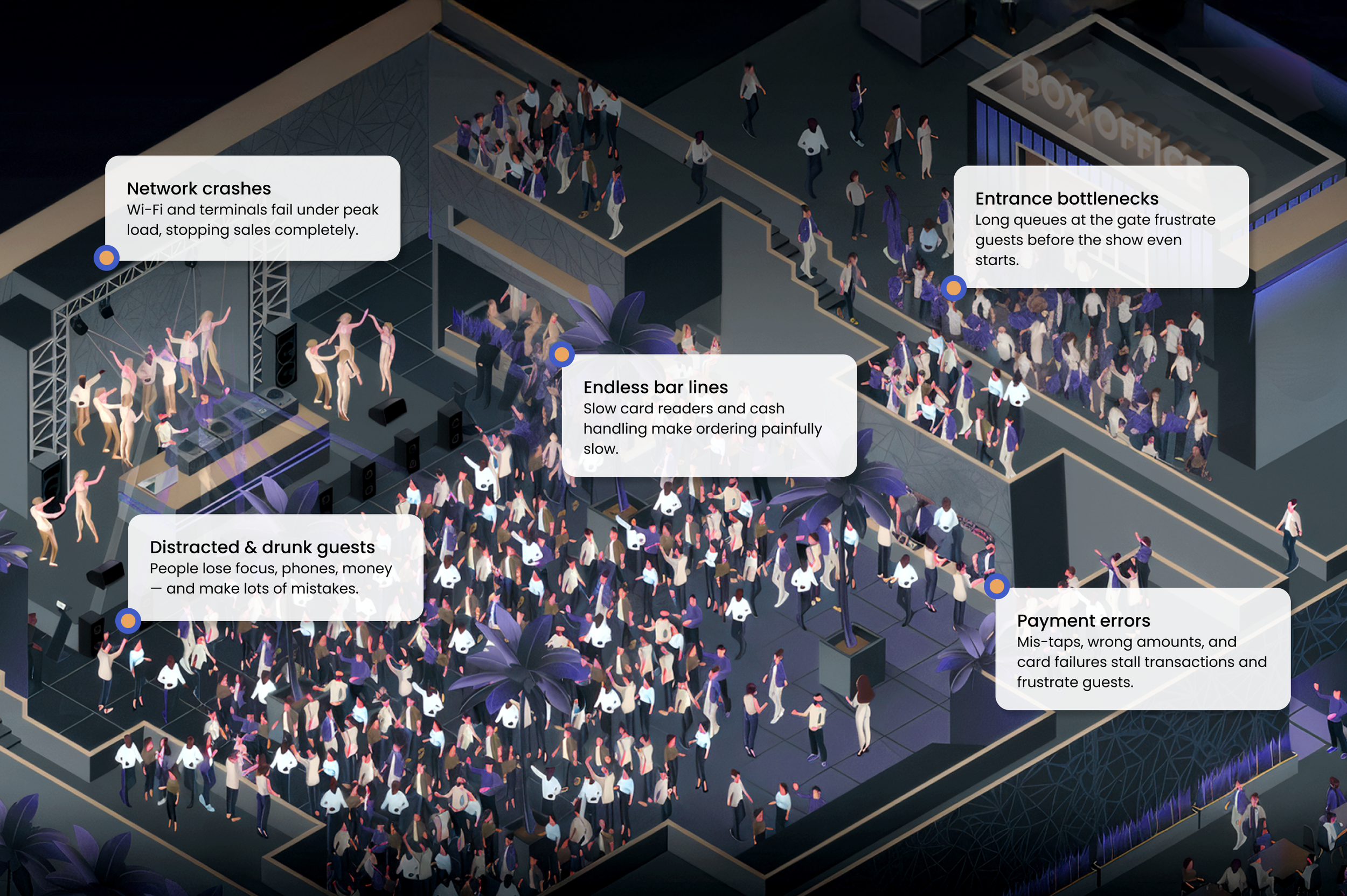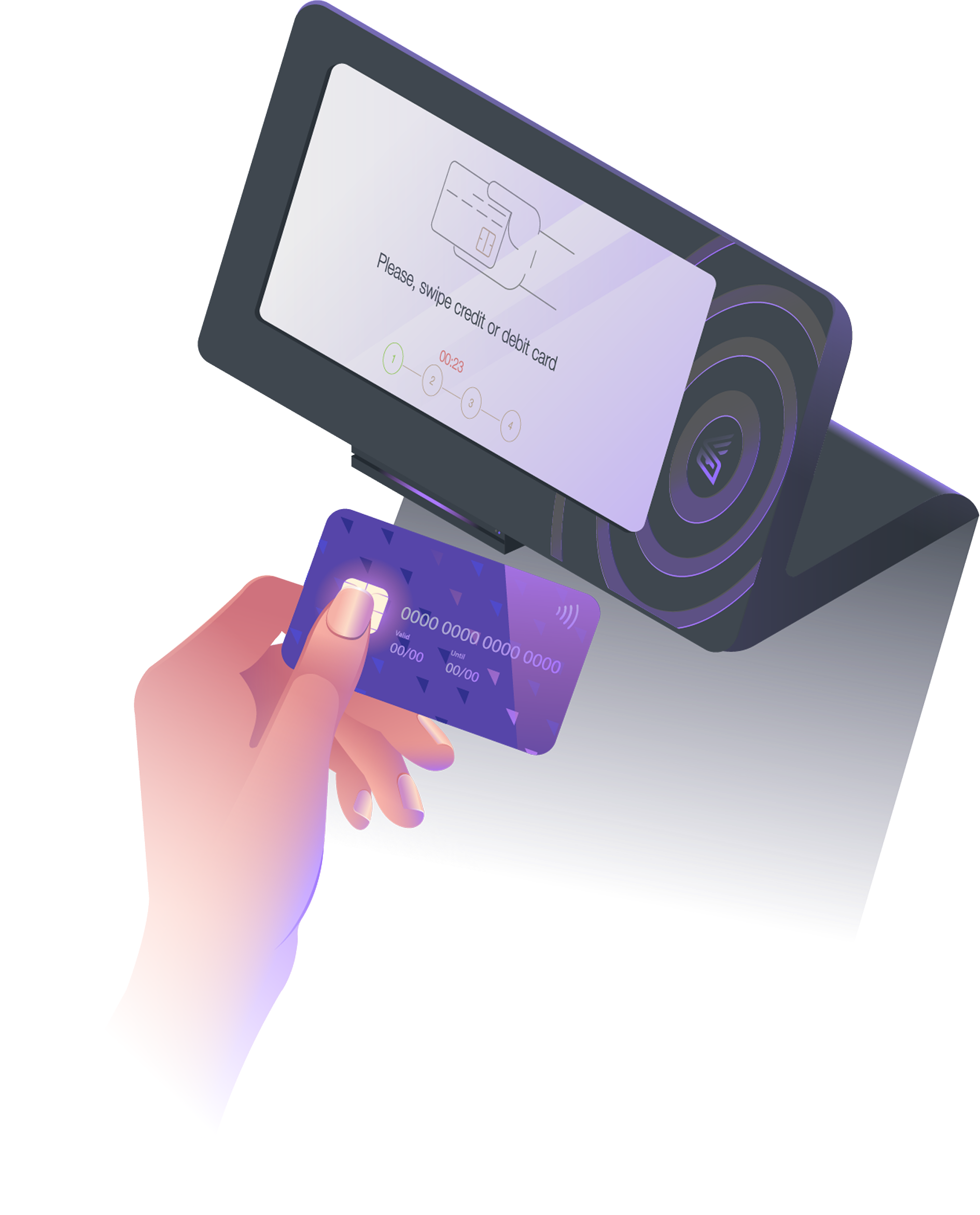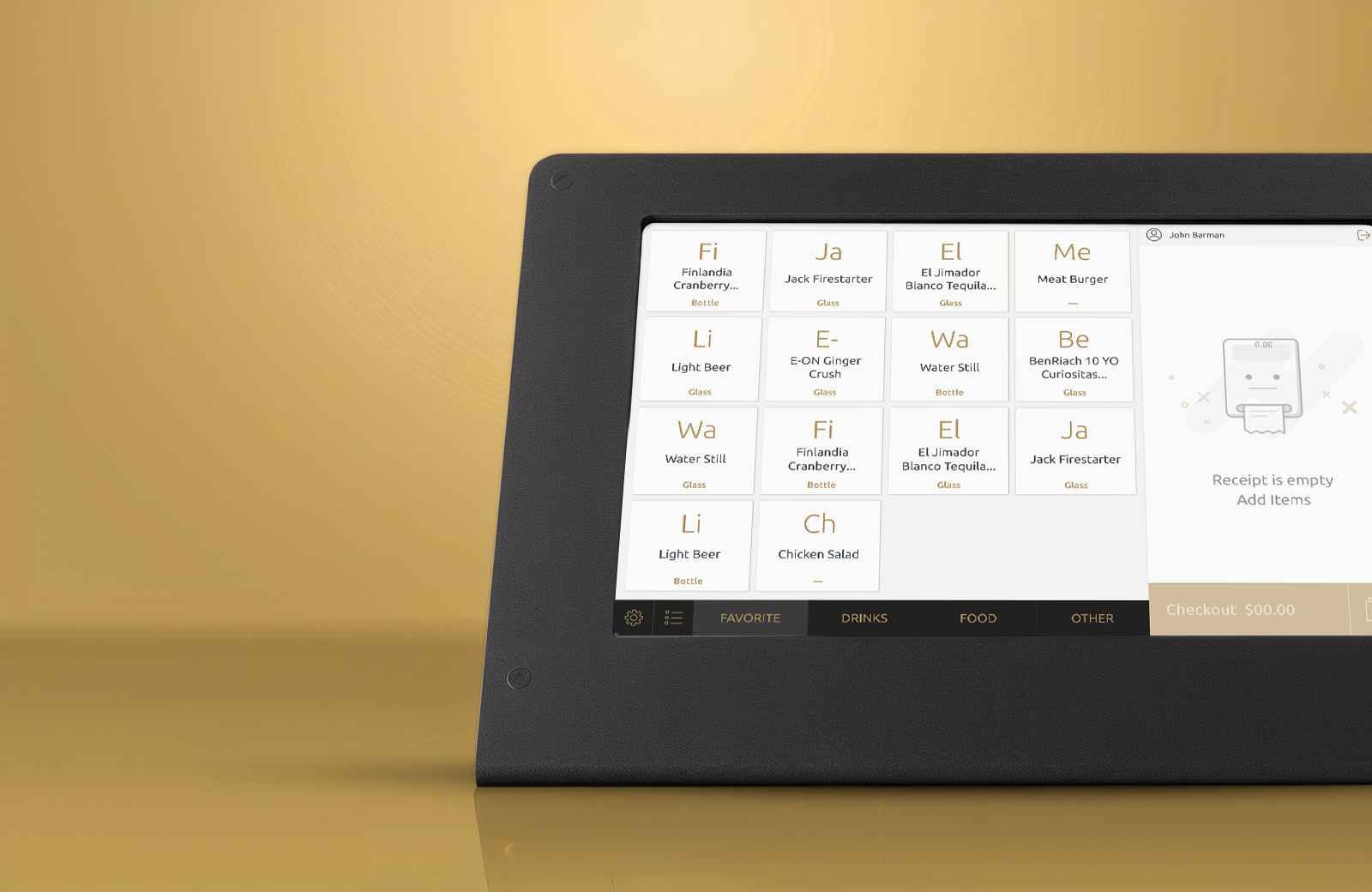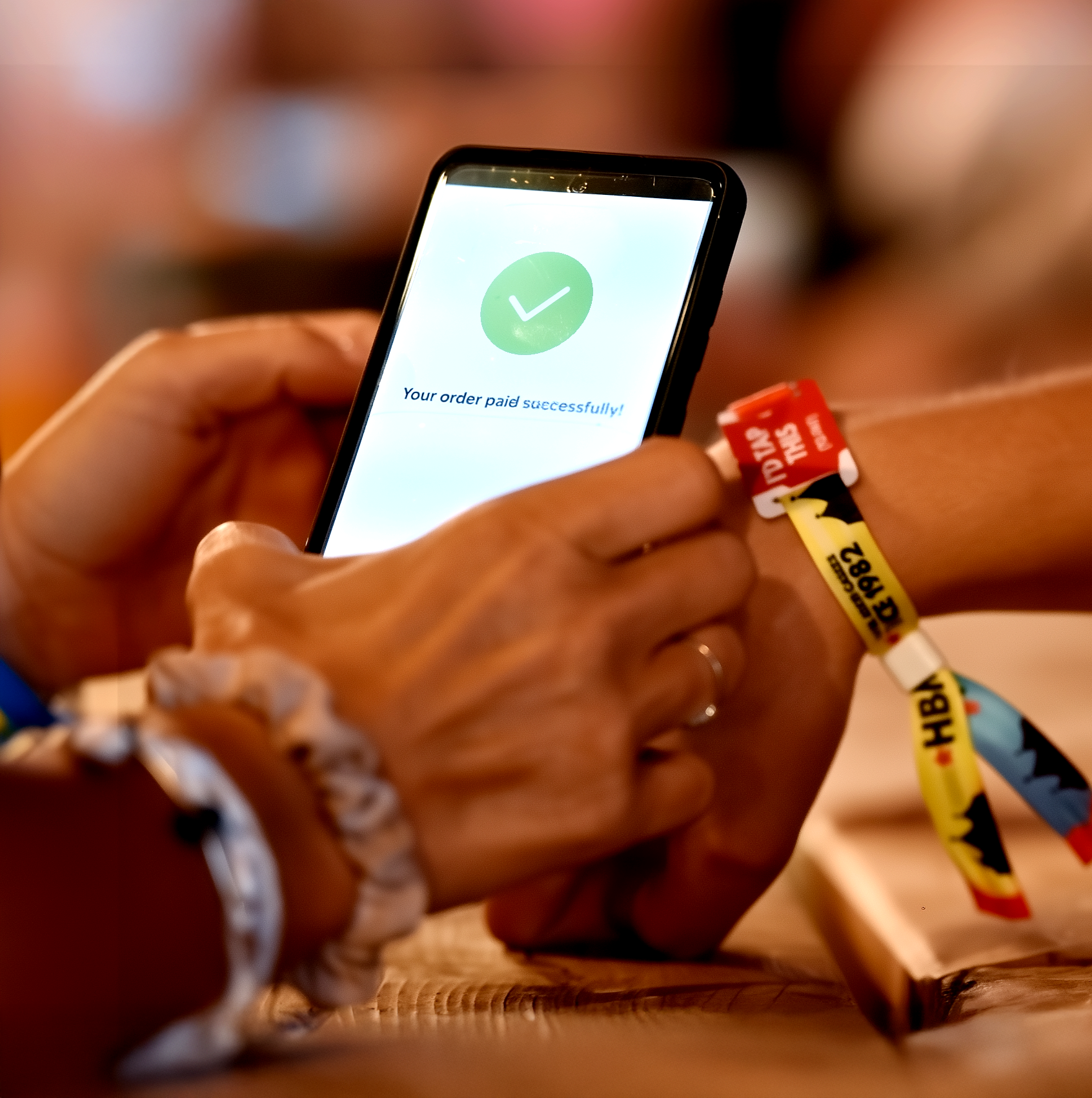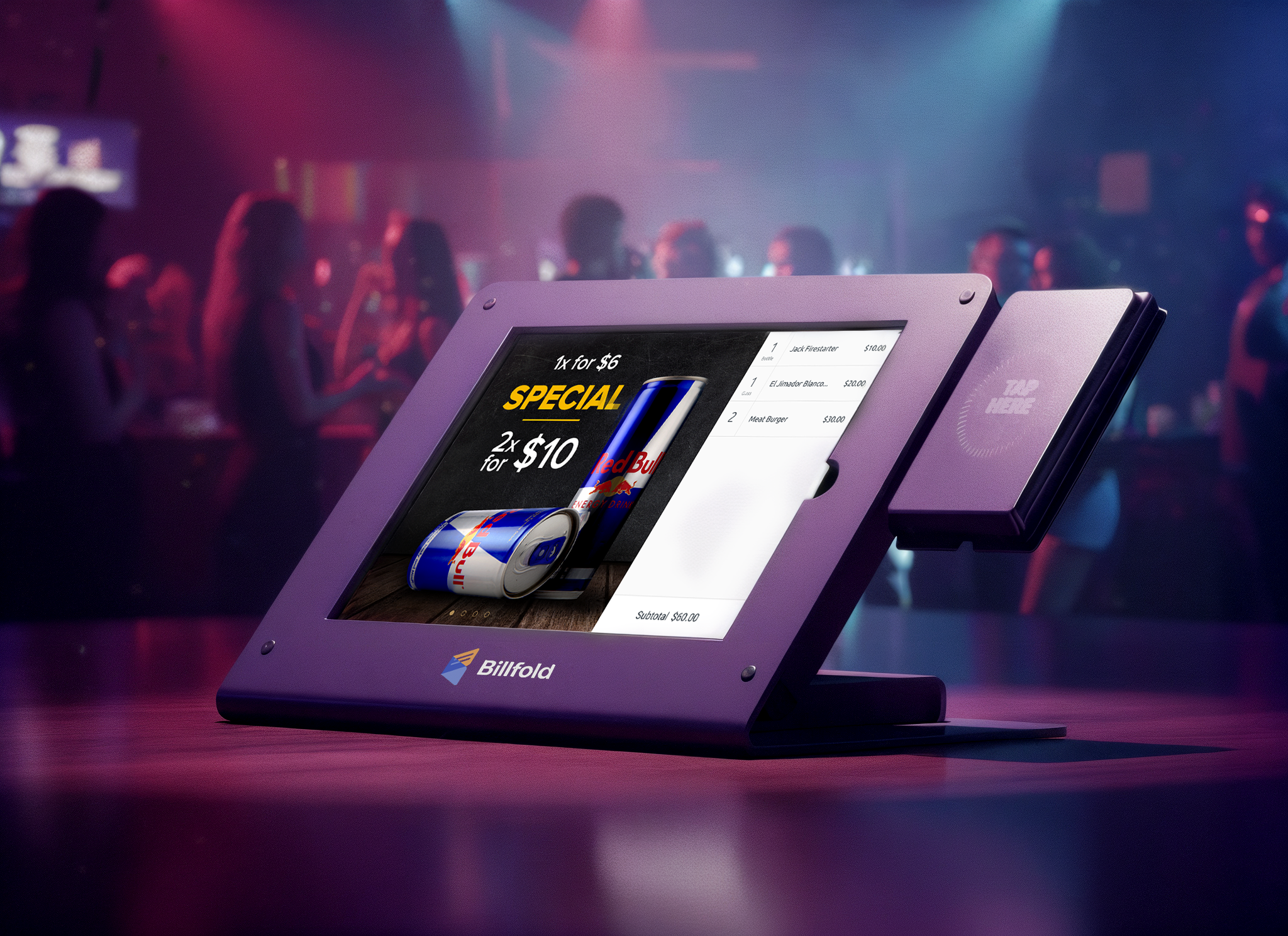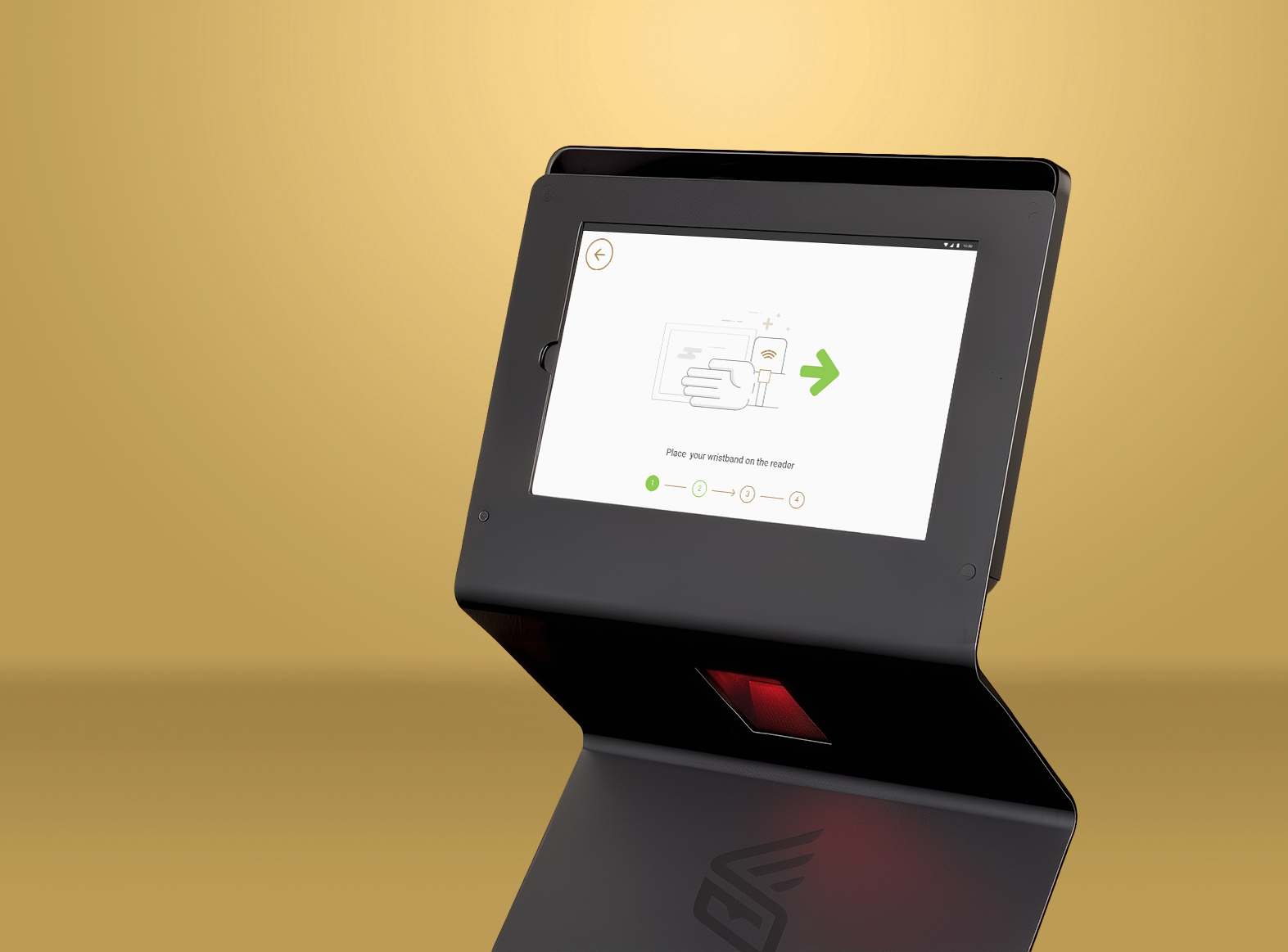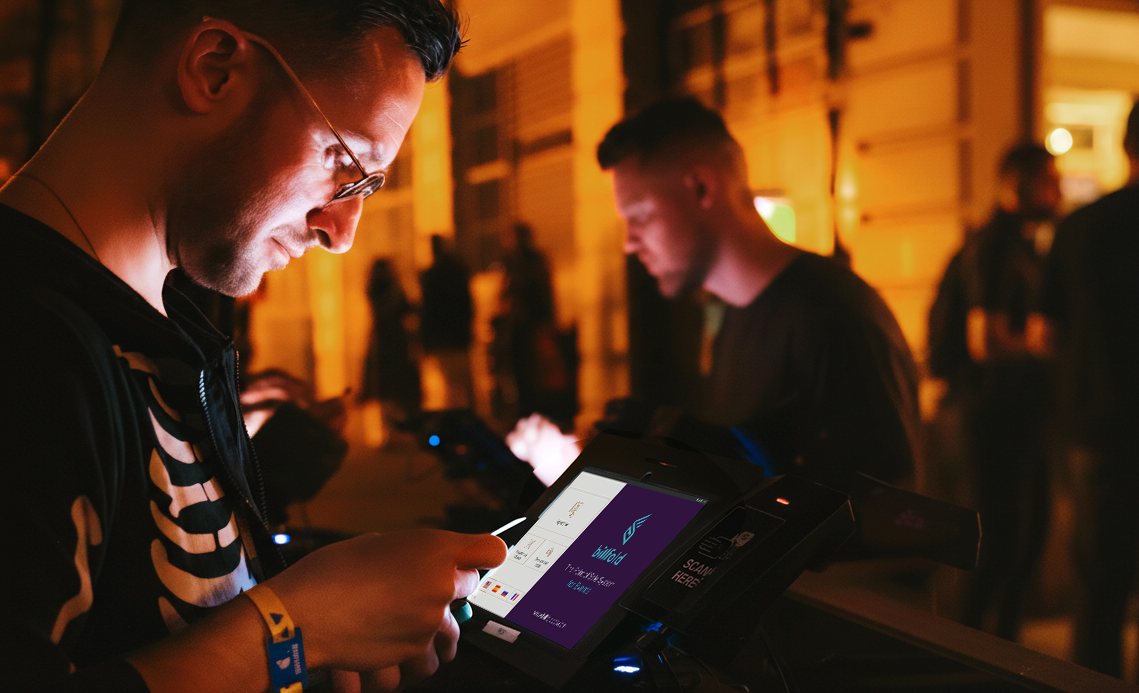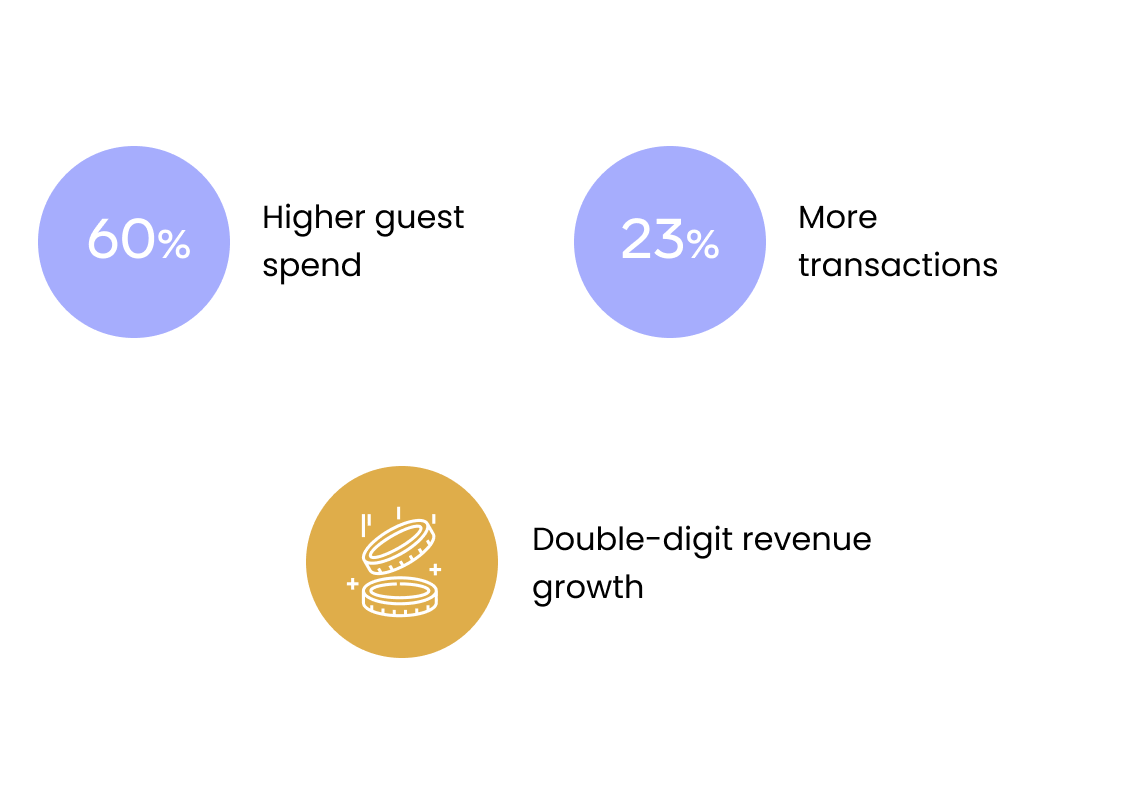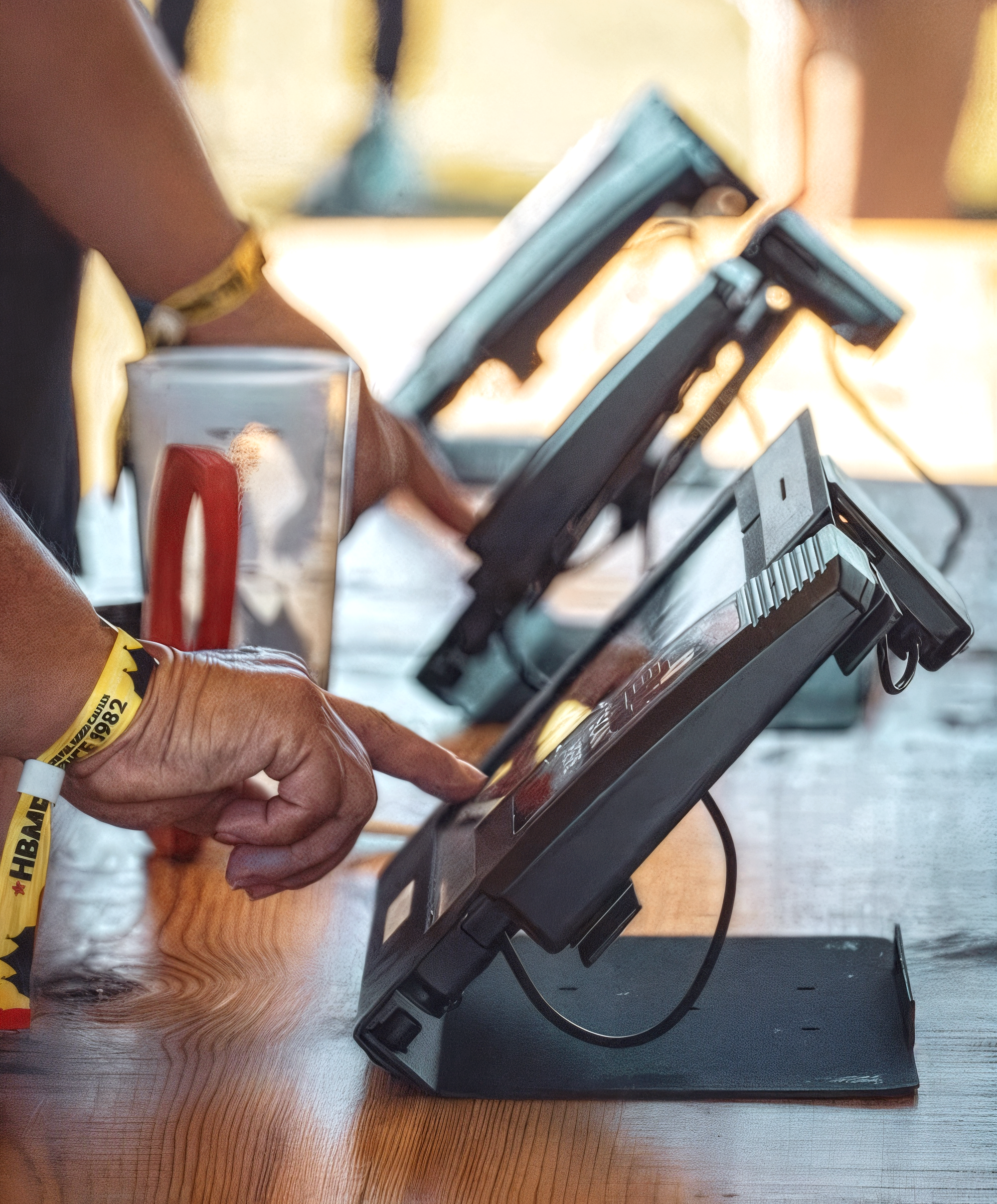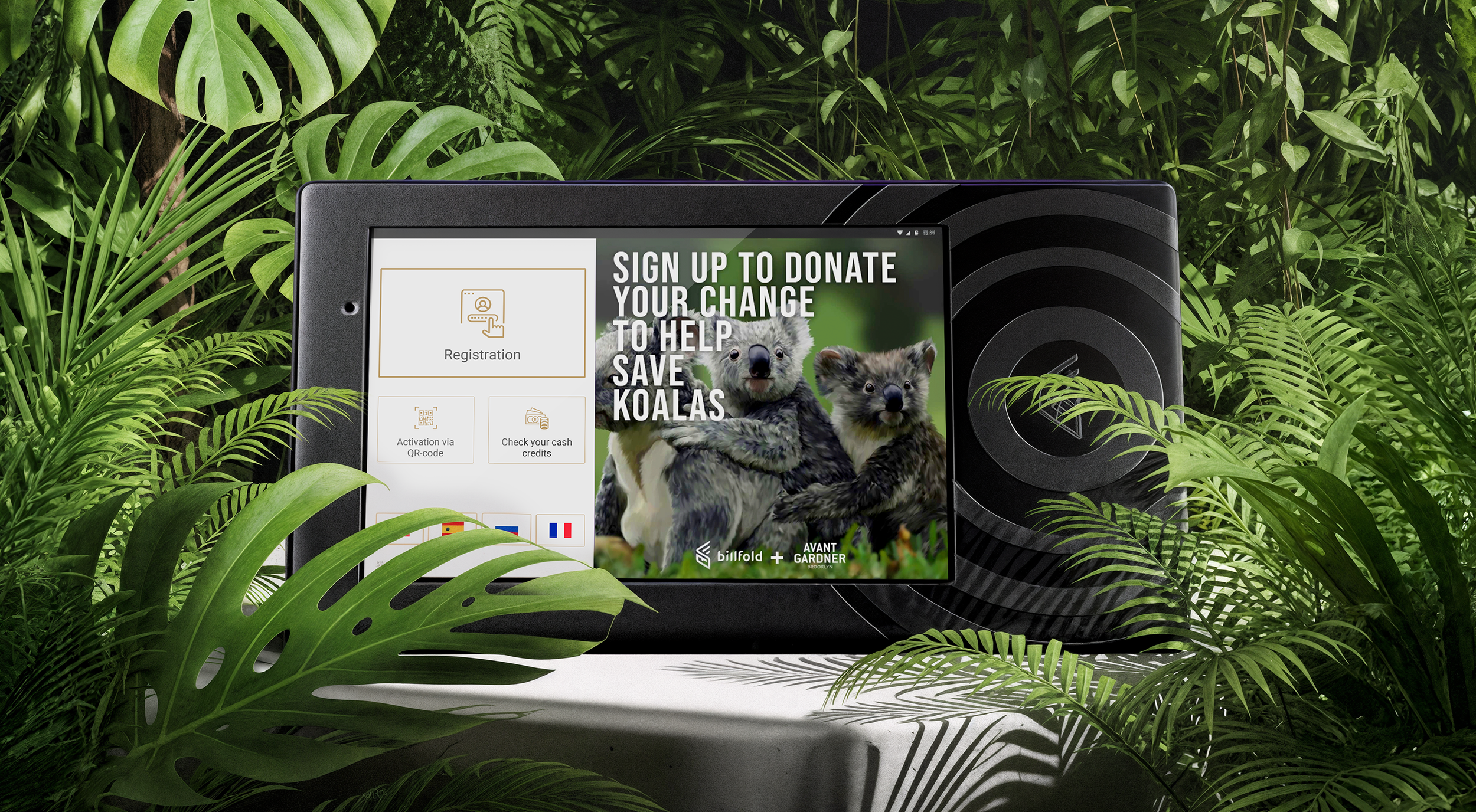Faster lines. Higher sales. Happier crowds.
Work/Billfold
Role: Sole Product Designer — from early concept to polished ecosystem
Team: PMs, developers, founders
Timeline: 5-year collaboration spanning launches, pauses, and product evolution
Impact:
Guest spend: up to +60% higher per person with RFID
Faster service: bartenders processed +23% more transactions
Event revenue: +30–50% higher sales at major events
Billfold is an RFID-powered payment ecosystem now used at large-scale festivals and stadiums worldwide.
I designed every touchpoint from scratch — from RFID wristband registration kiosks to vendor POS and guest-facing screens, to keep lines moving and payments effortless even when thousands of people ordered at once.
Overview
Billfold set out to solve one of the biggest frustrations in live events: slow, unreliable payments that created long lines and lost sales. Traditional card readers couldn’t handle peak demand, transactions stalled, hardware failed, and both guests and vendors paid the price. Every minute in line was money not spent at the bar, merch booth, or food stand.
I designed a cashless payment ecosystem that cut those bottlenecks out of the experience. Using RFID wristbands, dual-screen POS devices, and rugged hardware built for crowds, we created a system that processed transactions in seconds, kept queues moving, and gave organizers real-time data across every vendor.
By removing payment bottlenecks, we achieved shorter waits, higher guest spending, and a smoother experience for everyone — from fans and staff to operators.
The Challenge
Designing for festivals and stadiums meant building a system that worked under extreme pressure. At peak times, thousands of guests ordered at once, and even a two-second delay could ripple into minutes of waiting. Hardware had to survive weather, glare, and sticky hands, while staff with little training needed to serve quickly and without mistakes.
Guests were no easier: distracted, emotional, and often not fully sober, they gave only split-second attention to the screen. A single mis-tap could turn a $10 drink into a $100 charge, with no chance to explain mid-rush. Add failing networks, endless bar lines, and frustrated crowds, and every transaction carried the risk of slowing the whole event.
The challenge was clear: design a payment system that worked in chaos — fast enough to keep lines moving and reliable enough to protect revenue at every transaction.
My Responsibilities
I joined Billfold when there was no design team, no interface, and no real product, just a vision, a rough hardware prototype, and the urgency to move fast. From that starting point, my role was to transform a raw idea into something real, usable, and resilient enough for the chaos of live events.
For several years, I was the sole designer on the team, responsible for everything from early research and wireframes to polished prototypes and final UI. I created design systems, explored countless edge cases, and ensured consistency across hundreds of vendor- and guest-facing screens.
-
Remote research workflow
Designed everything from Russia while events happened in the US. I couldn’t just pop into a festival, so I relied on user videos, staff feedback, and constant iteration with engineers on-site.End-to-end design
Created flows, wireframes, and polished prototypes for both vendor and guest-facing tools.Real-world constraints
Designed for sun glare, rushed taps, drunk users, hardware quirks, and unpredictable environments.Tight collaboration
Partnered closely with founders and engineers to adapt quickly between live events.From prototype to product
Iterated fast, tested often, and turned raw observations into a stable, scalable UI now used at festivals and stadiums across the US.
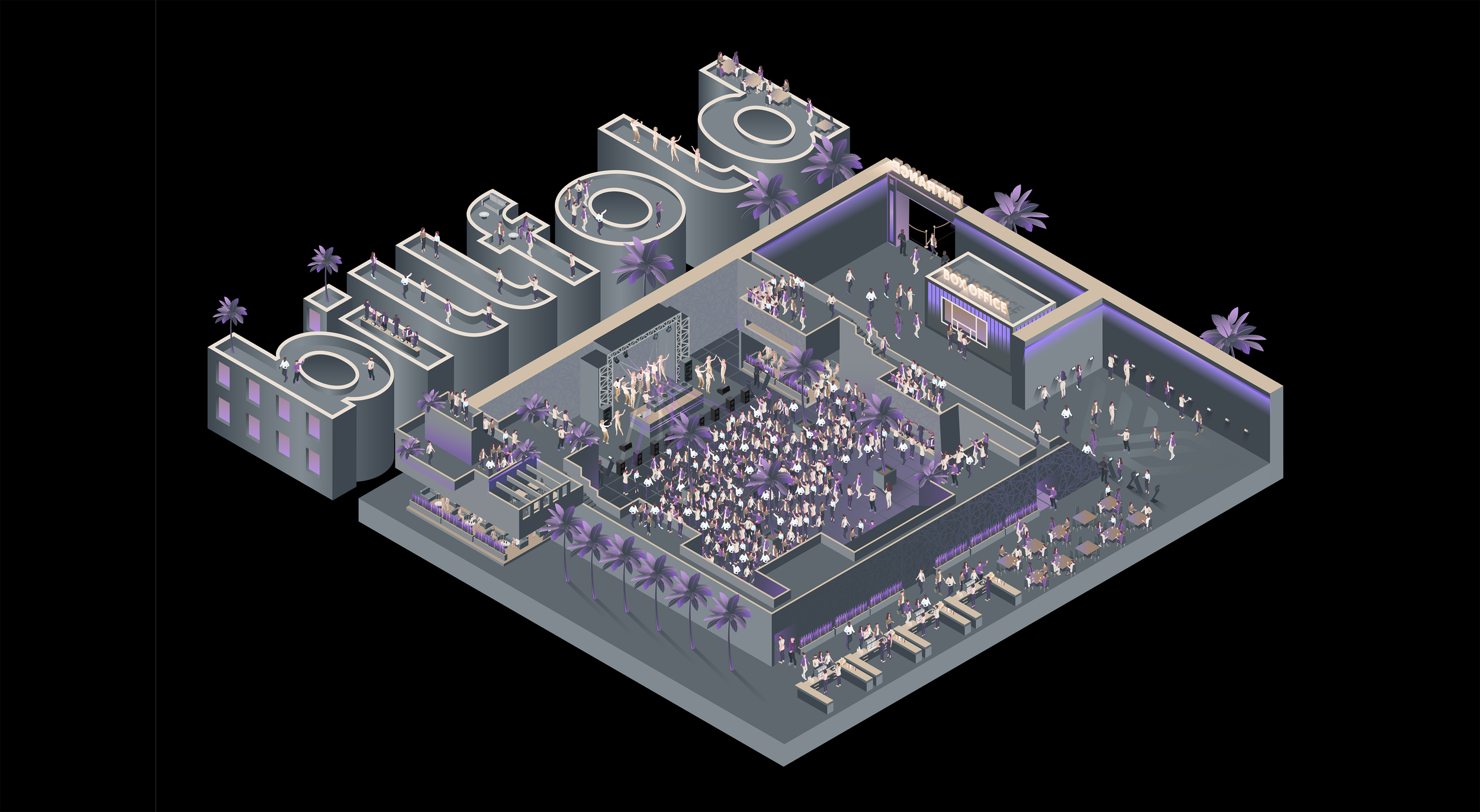
Research & Discovery
Since I couldn’t attend US festivals in person, research had to happen remotely. I worked closely with PMs, event staff, and engineers to understand how payments broke down during live events, and what vendors and guests struggled with the most. Feedback came from videos, on-site reports, and rapid loops between design and deployment.
This process helped me uncover the real conditions the product had to survive: sun glare on screens, beer-soaked hardware, distracted and impatient guests, and staff with barely any training. By combining remote insights with field feedback, I could translate messy realities into design principles the team could build on.
-
Remote observations
Analyzed staff videos and on-site recordings to see how devices performed during rush hours and where transactions failed.Feedback loops
Collected input from PMs, event organizers, and engineers after each live deployment to capture recurring pain points.Scenario mapping
Broke down critical moments like bar rushes, entry bottlenecks, and late-night crowd surges to identify risks.Environment factors
Studied how sun, glare, sticky hands, and loud settings shaped what people noticed (or missed) on the screen.
-
Speed was everything
Transactions needed to complete in under two seconds to keep lines moving.Guests paid no attention
Distracted, emotional, or drunk, they missed instructions and made constant mistakes.Vendors had no training
Temporary staff needed flows that were self-explanatory from the first tap.Hardware fought back
Sun glare, spills, and poor connections constantly pushed the system to fail.Errors cost real money
Every mis-tap or failed charge meant delays, complaints, and lost sales.
The Billfold Ecosystem
Billfold wasn’t just a single tool — it became an ecosystem designed to keep festivals running smoothly for everyone involved. From guests trying to buy a drink, to bartenders rushing through hundreds of orders and organizers keeping the entire event under control, every part of the system had to work together in real time.
The goal was to remove friction wherever it appeared. That meant making payments effortless for guests, reducing stress and mistakes for staff, and giving organizers the visibility they never had before. By unifying these perspectives, Billfold turned a chaotic process into one seamless flow.
Vendor-Facing POS
The tablet interface used by bartenders and cashiers. Designed to be ultra-fast and error-proof so staff with little training could serve hundreds of guests without slowing down.
Guest-Facing Screen
A display facing the customer that shows the order, confirms payment instantly, and reduces mistakes — giving guests confidence that every tap went through.
Wristband Registration Kiosk
A self-service station at the entrance where guests link their bank card to an RFID wristband. This one-time setup meant no wallets or phones needed inside the event — just tap and go.
The Vendor Experience
For bartenders and waiters, speed was everything. At peak hours, a single extra tap or a confusing screen could slow the entire line and frustrate hundreds of guests. The vendor-facing POS had to be simple enough to learn in minutes and reliable enough to handle non stop orders all night.
Designing for this reality meant focusing on clarity, error-prevention, and speed above all else. Every interaction was reduced to the essentials, giving staff confidence under pressure and keeping drinks flowing even in the busiest rush.
-
Dual-Screen Layout
We used a hardware setup with two screens back-to-back (one facing staff, one facing guest). I crafted the UI so that the staff side and guest side showed appropriate info without one person accidentally doing something on the other’s behalf. This separation meant no accidental taps by guests and clear communication – each side of the transaction had their own view.Large, Legible UI
The staff interface featured big buttons and text. Picture a bartender who’s multitasking – our buttons for each item (beer, soda, etc.) were huge touch targets. We chose high-contrast colors for visibility under various lighting.Rapid actions
The flow from selecting items to payment had to be lightning fast. We streamlined it to essentially two steps: select items (via quick-touch buttons), then the guest taps their wristband to pay – done. No extra confirmations unless something goes wrong. On average, transactions took ~2 seconds to process, which we clearly hit as a goal. There were lots of subtle design choices to achieve this: e.g., defaults to most common quantity, automatic total calculation, etc., all to minimize thinking and taps.Fail-safes for Offline
We knew connectivity at events can be spotty. If the POS lost internet, it would locally cache transactions and the UI would give a small warning, but otherwise allow continued operation. This was critical; a network outage shouldn’t stop the beer sales! From a UX perspective, the challenge was assuring users that it’s okay to continue when offline and making sure no data is lost or duplicated – we nailed this by lots of edge-case testing and clear indicators.Additional Vendor Tools
We included features vendors at events need, like quickly issuing refunds or voids (e.g., if someone changed their mind on a purchase). I made sure those flows were accessible but also double-confirmed (to avoid abuse or mistakes).tion text goes here
The Guest-Facing Screen
For guests, confidence was everything. In the middle of a noisy crowd, they needed to know their order was right and their payment went through, without second-guessing or asking staff. The customer-facing screen had to remove doubt in an environment where attention lasted only a second.
That meant showing the right information at the right time: clear totals, instant confirmation, and feedback that felt effortless. The goal was simple — make every tap trustworthy, so guests could spend less time worrying about payments and more time enjoying the event.
-
Live Order Display
As each item was added, it appeared in real-time on the guest screen — e.g., “Beer ×2 – $12.” This gave guests a transparent, receipt-like view of their order and helped prevent confusion or disputes.Simple, Confident Checkout
Once the order was ready, the screen showed a clear total and prompt: “Total $24. Tap wristband to pay.” After payment, it instantly confirmed with a big green checkmark.Kind Error Feedback
If a tap failed (e.g., card declined), the screen showed clear, neutral messaging like “Card declined – try another card” The goal was to resolve the moment without confusion or embarrassment — tone and clarity mattered as much as the UX flow.Subtle Promotions (Billfold Engage)
During idle times, the screen could display sponsor promos or venue messages. I designed a banner area that appeared only when no transaction was in progress, and kept it visually quiet to avoid distracting from the main task flow.One-Tap Donations (Billfold Give)
After checkout, guests could choose to round up their total and donate spare change to charity. I’m proud that this design led to a surprisingly high opt-in rate – it turns out many people in a good mood at a festival are happy to donate their spare change if you make it one tap.
The Guest Journey: Check-In Kiosks
The first impression of any event happens at the gate. Guests arriving with excitement don’t want to stand in another long line just to set up a wristband. The self-check-in kiosk had to make registration quick, intuitive, and foolproof, so thousands of people could flow through without bottlenecks.
The design challenge was to guide distracted guests through a one-time setup in under 20 seconds. Clear instructions, simple steps, and instant feedback made it possible. Once their card was linked to the RFID wristband, guests could put wallets and phones away and just tap to pay for the rest of the event.
-
Fast Flow
I designed the flow to be as few steps as possible: Tap your wristband to start → Swipe or insert your credit card (or select Apple/Google Pay) → (Optional: enter phone/email if you want receipts) → Done, enjoy the event. It typically took under a minute.Clarity and Reassurance
Each step included a progress indicator (“Step 2 of 3”) so users understood the flow was quick and simple. We used clear visuals — like an icon of a wristband being tapped or a credit card — to make the process intuitive at a glance. At the end, the confirmation screen told them their wristband was now their wallet. And for added reassurance, if they entered contact info, we sent a confirmation text with a link.UX for Difficult Environments: These kiosks might be in sunlight or nighttime and used by thousands of attendees, some of whom may not speak English well (in international events). We allowed users to choose their language at the start, and I made sure the UI used simple phrasing, large text, and universal icons.
No Bottlenecks
Recognizing that the check-in could be a bottleneck itself, we designed the system to allow multiple kiosks and also roaming staff with handheld versions. The software was the same in both. My flows had to account for someone starting at a kiosk and maybe finishing with staff help, etc.
Results in the Real World
Billfold grew from a fragile prototype into the payment backbone of major festivals and stadiums, built to handle the moments when thousands of guests order at once.
Even under peak demand, transactions cleared in under 2 seconds, and sales continued seamlessly through network drops thanks to offline resilience. Bartenders finally could focus on serving and guests on enjoying the night.
The business impact was undeniable: guests spent up to 60% more, transactions increased by 23%, and organizers reported double-digit revenue growth after switching to Billfold. Tips doubled, queues shrank, and vendors finally had a system they could trust under pressure. Today, it’s still running at large events worldwide, a direct result of design choices made to balance speed, clarity, and resilience.
-
Faster service at scale
Transactions that once took ~1 minute on credit card readers were cut to under 2 seconds with RFID wristbands. At peak hours, bartenders could process more than 200 orders per hour, shrinking bar lines and keeping guests in the show instead of stuck in queues.Higher guest confidence & spending
Guests no longer worried about wallets, phones, or failed card swipes. Clear on-screen confirmations made every tap trustworthy. This simplicity drove behavior change: per-person spend rose by +60% at some venues, and RFID users spent over 2× more than card users at large festivals.Boosted vendor performance & tips
For staff, the POS became a tool they could learn in minutes. Error-proof buttons, minimal steps, and offline fail-safes kept service flowing even in chaos. Bartenders not only served faster but saw tips double on average, since payments were so seamless guests could tip without friction.Revenue growth for organizers
Removing bottlenecks directly impacted the bottom line. Events using Billfold reported up to +79% higher total revenue, driven by faster throughput, more transactions, and increased per-guest spend.Resilient operations in chaos
Even when Wi-Fi crashed, Billfold didn’t. POS devices cached transactions locally and synced when back online, ensuring 99.65% offline success. For organizers, this reliability meant no sales lost during network failures — and real-time dashboards finally gave visibility across every vendor and location.
Reflections & Growth
Billfold pushed me to design for real-world chaos, not polished screens. Remote and working solo, I had to move fast, trust my decisions, and make them work for bartenders with 30-second training and guests who barely looked at the UI.
What mattered most were the small wins: one clearer total, one fewer tap, one steadier flow, and lines shrank, staff exhaled, sales climbed. It proved to me that the best design shows its value under pressure, where clarity makes the biggest difference.
Growing Through Constraints
Because I couldn’t be on-site, I had to adapt my research approach, relying on staff videos, real-time feedback loops, and rapid iterations with engineers in the field.
It wasn’t always perfect, but it taught me to stay curious, flexible, and resourceful.
At the same time, working as the only designer in a startup pushed me to grow in resilience and autonomy: trusting my instincts, making fast decisions, and defending them to a cross-functional team that needed results, not just polished screens.
Thinking Beyond Interfaces
I got a crash course in designing hardware and software together, aligning screen logic with RFID behavior, and understanding how even a 1-second delay could break trust.
That experience pushed me to think less about individual screens and more about the system as a whole — how devices, flows, and infrastructure connect to shape the user experience.
Connecting UX to Business
I saw first-hand how UX drives business metrics. Faster flows and clearer screens didn’t just feel better — they increased revenue, enabled tens of thousands of extra transactions, and gave venues confidence in a system they could rely on. Design wasn’t decoration here, it was directly tied to dollars, scale, and trust.
When design removes friction, everyone wins — staff feel supported, guests stay engaged, and the business sees the difference in the numbers.


